Classification Test
1/21
There's no tags or description
Looks like no tags are added yet.
Name | Mastery | Learn | Test | Matching | Spaced |
|---|
No study sessions yet.
22 Terms
D. Archaebacteria
Methanogens, thermophiles, and halophiles are some of the most primitive life-forms found on
Earth and thrive in very harsh environments. These unicellular, prokaryotic organisms most likely
belong to which of the following kingdoms?
A. Fungi
B. Eubacteria
C. Protista
D. Archaebacteria
C. Fungi are multicellular and break down dead plant and animal matter.
Which of the following best describes a characteristic that distinguishes Fungi from other kingdoms?
A. Fungi are able to reproduce both sexually and asexually.
B. Fungi are eukaryotes with complex organ systems.
C. Fungi are multicellular and break down dead plant and animal matter.
D. Fungi have cell walls and specialized tissues.
A. Animals have complex organ systems and reproduce sexually.
Which of the following best describes the characteristics that differentiate animals from the organisms of other kingdoms?
A. Animals have complex organ systems and reproduce sexually.
B. Animals have eukaryotic cells and are multicellular.
C. Animals have external digestion and are vertebrates.
D. Animals have rigid cell walls and specialized tissues.
The flu virus is constantly mutating and changing.

D. species
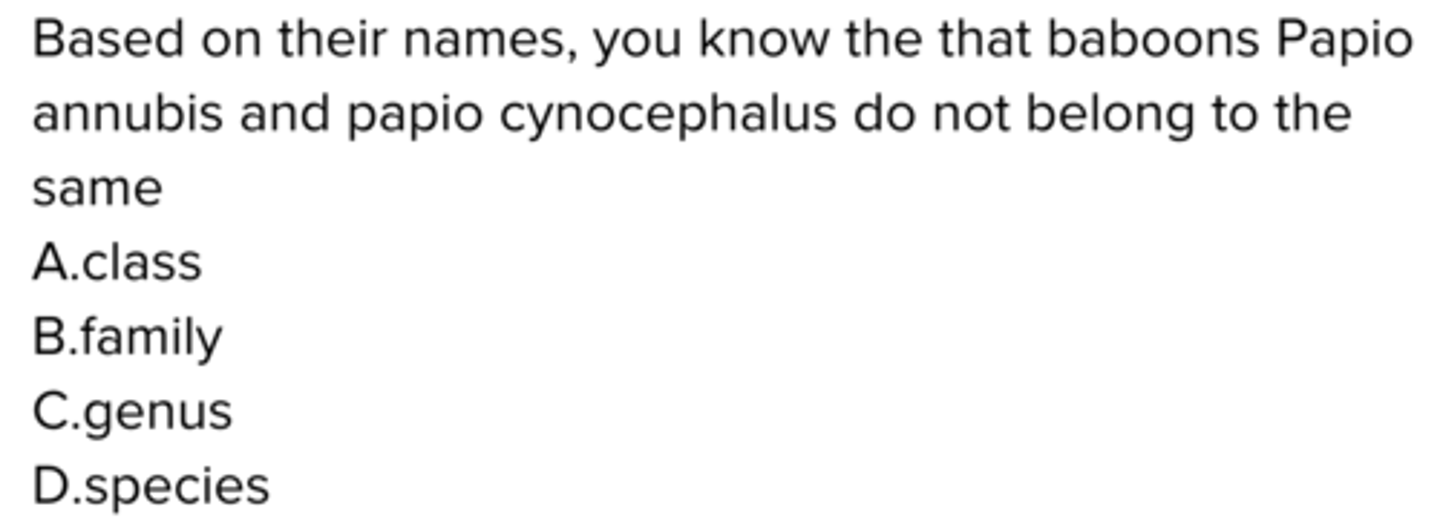
b. species
In the Linnaean system of classification, which of the following is most commonly defined as a group of organisms that can breed and produce offspring?
a. phylum
b. species
c. genus
d. order
a. phylum, order, family, genus
Which of the following lists Linnaean taxa in the correct order from general to specific?
a. phylum, order, family, genus
b. kingdom, order, class, phylum
d. class, order, species, genus
d. binomial nomenclature
Scientists assign each kind of organism a universally accepted name in the system known as
a. traditional classifcation
b. the three domains
c. cladistics
d. binomial nomenclature
b. to break down nutrients in dead matter
Fungi-like protists, fungi, and bacteria have an important role in an ecosystem. What is this role?
a. to carry out photosynthesis
b. to break down nutrients in dead matter
c. to destroy bacterial cells
d. to produce oxygen for Earth's atmosphere
c. Eukarya
Which domain contains all organisms that have a nucleus?
a. Bacteria
b. Archaea
c. Eukarya
d. Protista
Scientists find a particle only visible with an electron microscope and is the shape of a soccer ball. The particle is non-cellular but has a DNA core. The core is enclosed in a protein coat and the coat has spike-like projections all over its surface. This must be a(n) ______________.
a. Eubacteria
b. Protist
c. Virus
d. Archaebacteria
c. Protist
Which kingdom contains autotrophic and heterotrophic, eukaryotic organisms?
a. Fungi
b. Archaebacteria
c. Protist
d. Eubacteria
b. protist
Madison is looking at a cell under the microscope. The organism has only one cell, and it has a nucleus and membrane bound organelles. It has no cell wall and uses flagella for movement. In which kingdom should this organism be classified?
a. virus
b. protist
c. fungi
d. bacteria
b. because they do not maintain homeostasis
Why do most scientists consider viruses to be non-living?
a. because they have no genes
b. because they do not maintain homeostasis
c. because they are unable to reproduce, even with host
d. because there are no definite structural features seen under a microscope
Organisms 2 and 3
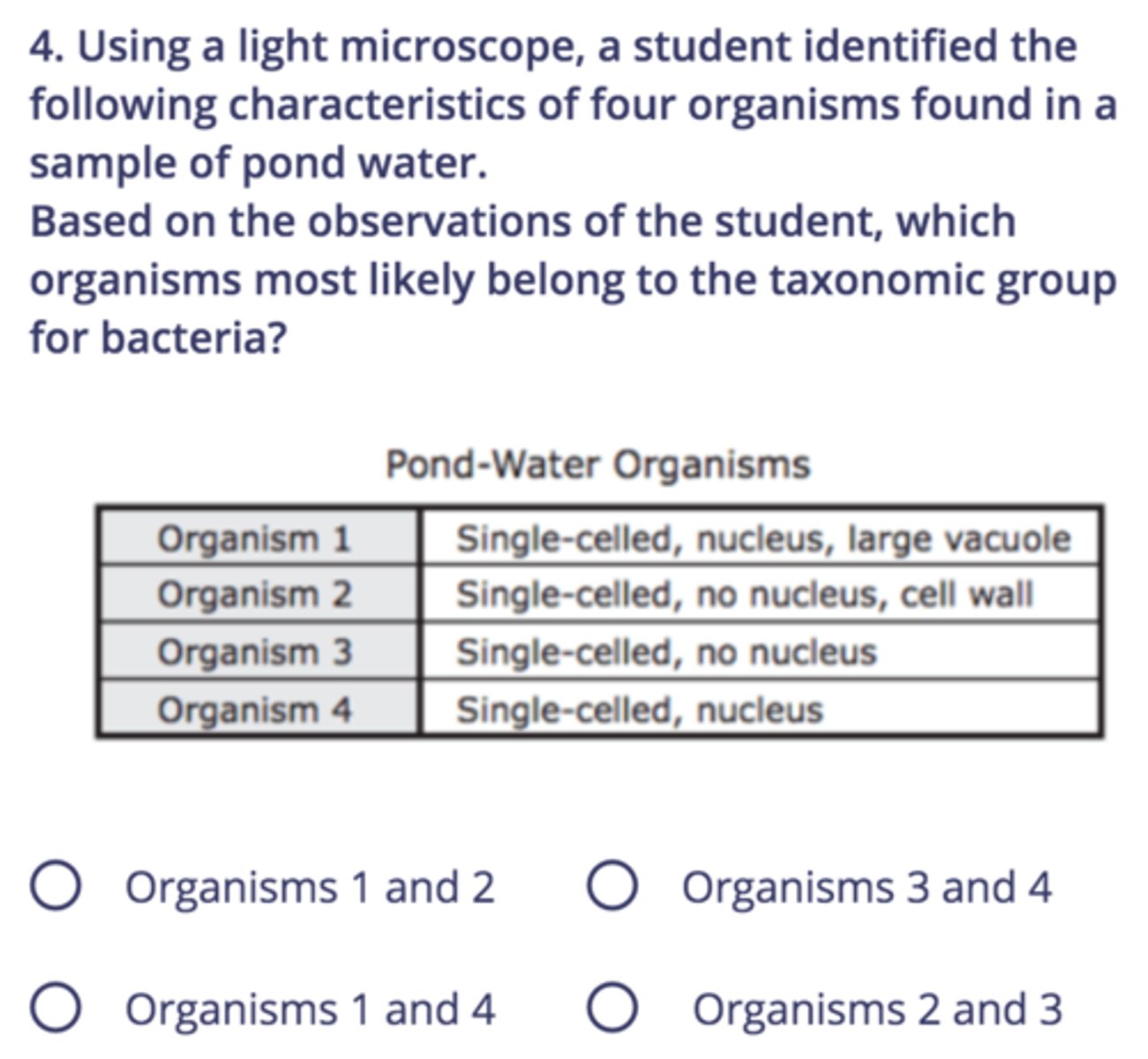
d. viruses
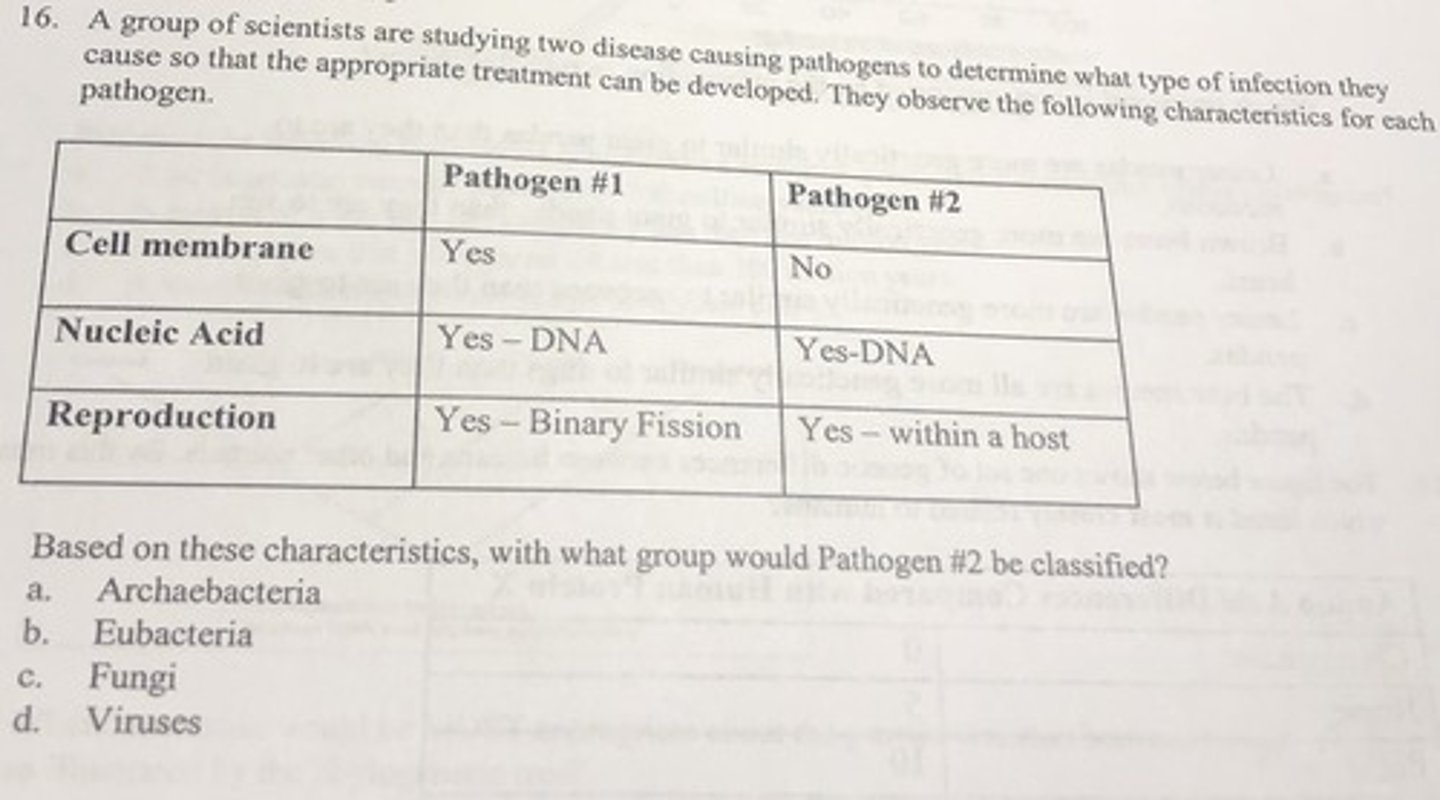
Lesser pandas are more genetically similar to raccoons than they are to giant pandas
An analysis of DNA and RNA sequences can be used to classify organisms. A dendrogram/evolutionary tree, such as the one shown below, is based on molecular data. It can be used to represent evolutionary relationships within a group of organisms that are hypothesized to have descended from a common ancestor.
Which statement is best supported by the information in this cladogram?
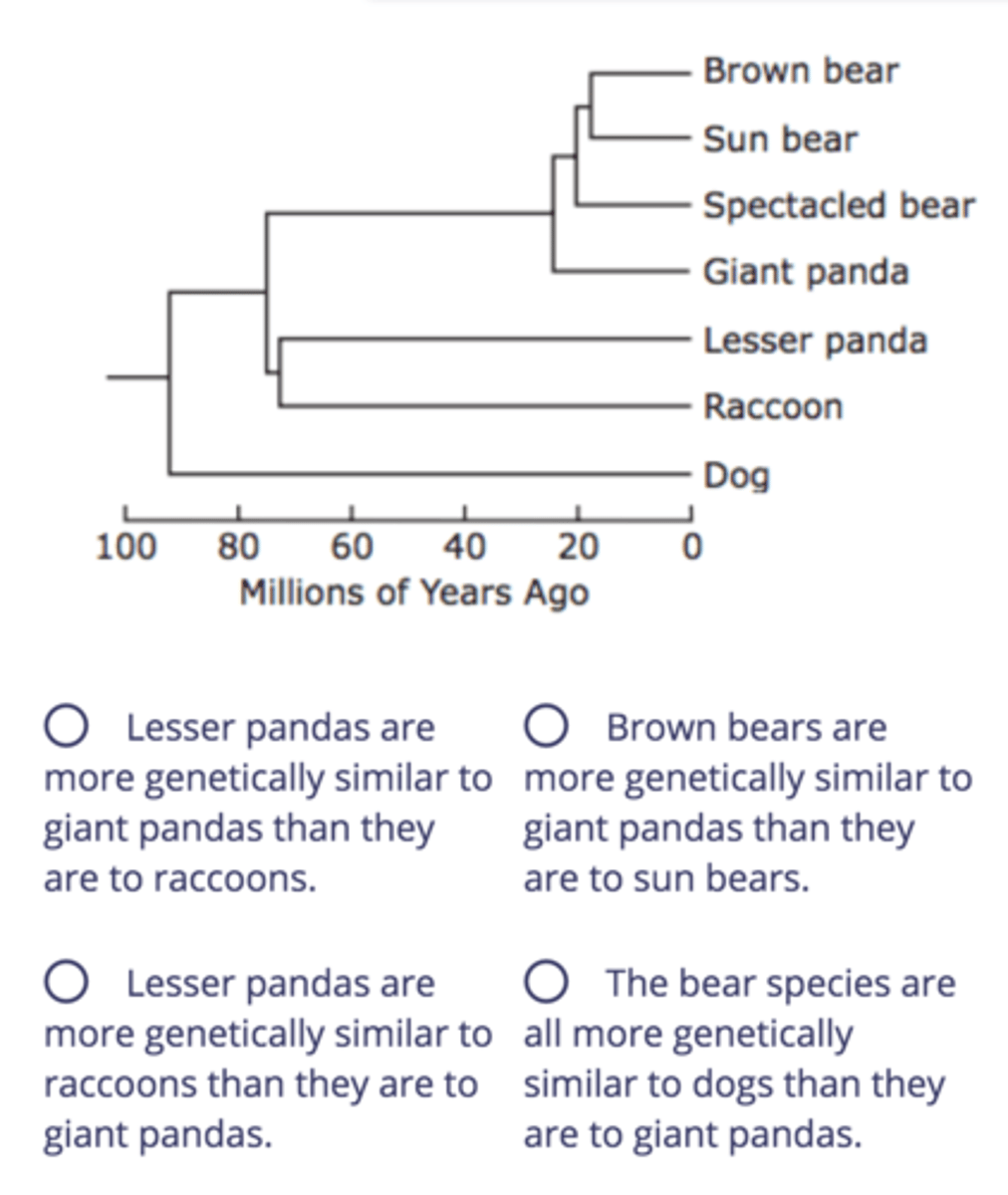
d. chimpanzee
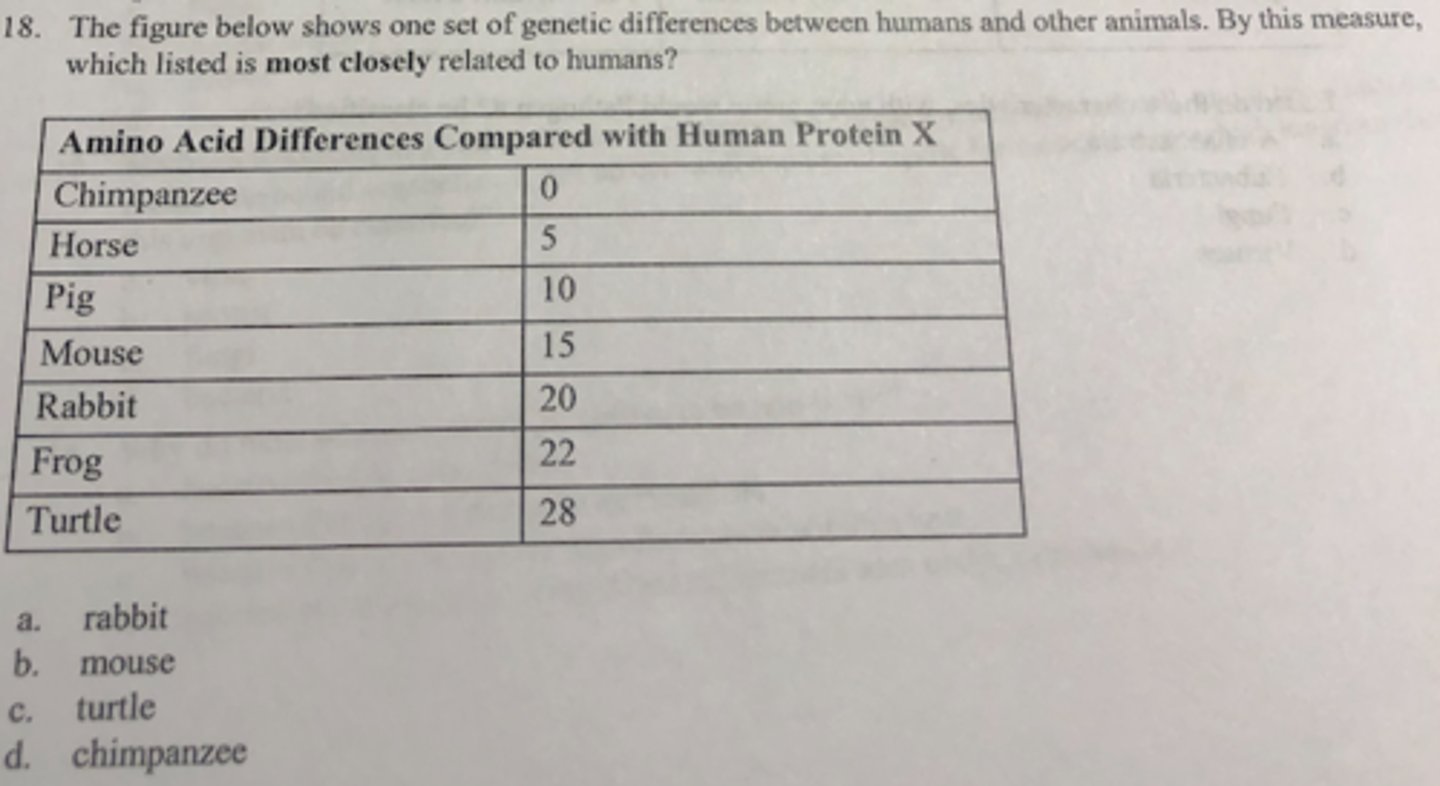
A fossil of a fern more than 425 million years.
The cladogram shows the evolution of land plants as indicated by fossil records.
Which discovery would challenge the validity of this cladogram?

C. The genetic variation between humans and orangutans is the greatest.
What conclusion would be MOST appropriate about the genetic variation between humans and the three apes as illustrated by the phylogenetic tree?
A) Genetic variation between all four organisms is non-existent.
B) The genetic variation between all four organisms is about the same.
C) The genetic variation between humans and orangutans is the greatest.
D) Humans branched off from the other three animals due to great genetic variations.
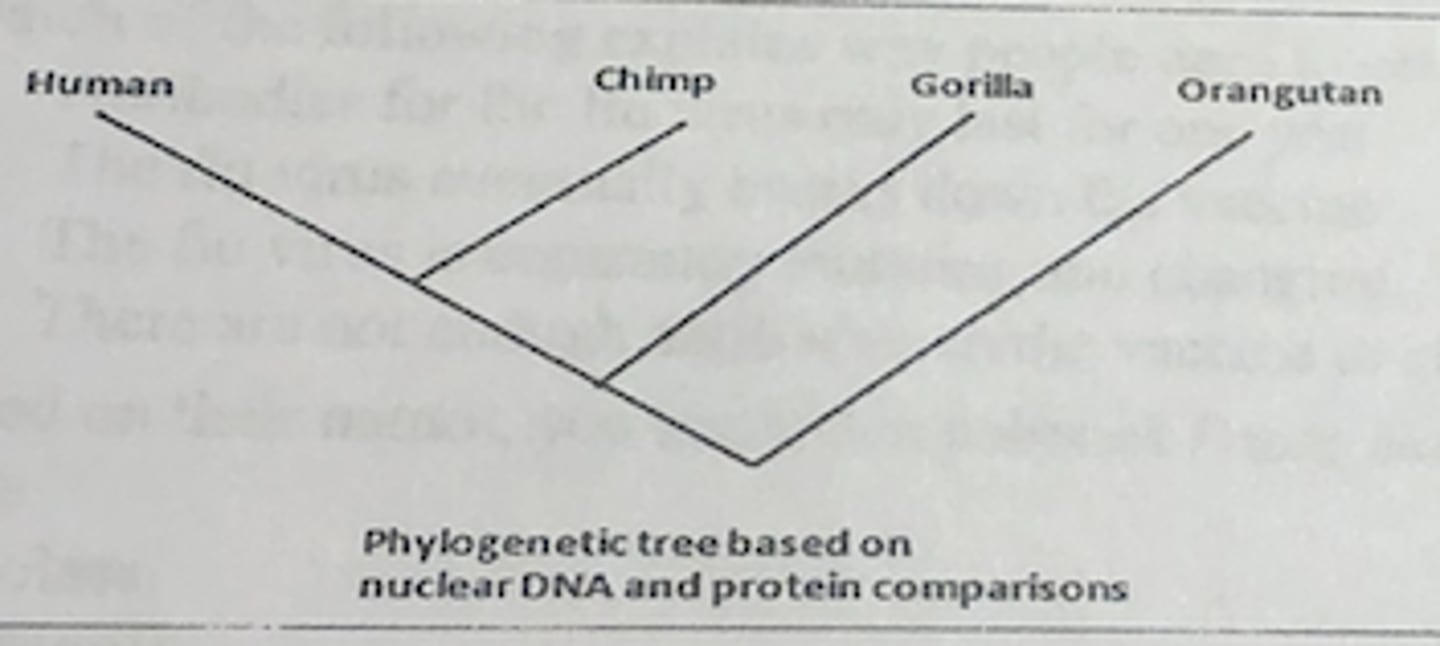
a. Yes, viruses contain nucleic acids but bacteria do not.
Does the presence of nucleic acids help scientists classify disease-causing agents as bacteria or viruses?
a. Yes, viruses contain nucleic acids but bacteria do not.
b. Yes, bacteria contain nucleic acids but viruses do not.
c. No, neither bacteria nor viruses contain nucleic acid.
d. No, both bacteria and viruses contain nucleic acids.
The H1N1 virus replicates quickly.
H1N1 flu is a highly contagious viral infection caused by the influenza A (H1N1) virus. The symptoms of H1N1 flu are listed in the box below. An antiviral agent administered within 48 hours of the appearance of symptoms can reduce the severity of the illness.
Why is it important to administer an antiviral agent to an infected person within 48 hours of the appearance of symptoms?
